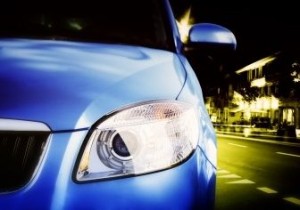One of the most common causes of MOT failure is faulty lights on a vehicle, meaning the exterior lights not the many and various dashboard warning lights which are now the subject of separate checks.
It’s easy enough to check your lights before bringing the car in for an MOT. For a start all lights must be unobscured so if you’ve added any fittings to the car which cover or partially cover one of the lights it’s likely to be an MOT fail.
Check the lights work and are the right colour, you can buy replacement bulbs from auto shops or petrol stations. On some cars it’s relatively easy to get inside the light clusters to change the bulbs, on others you need magic hands that can squeeze into tight spaces and undo clasps and clips at the same time. Might as well leave it to us!
Here are the guidelines we have to stick to when checking lights:
Side lights (“Position lamps”)
Must all work and show a white light at the front, red at the back, and be visible from “a reasonable distance”.
Headlights (“Headlamps”)
Headlamps must have both dipped and main beams working and giving adequate light to illuminate the road ahead. Must also display the correct light pattern, this is usually easily adjustable so rarely causes a problem. Cracked lenses are OK provided the light strength and pattern is not affected and the headlights are not “excessively damaged” – you may want to repair any bad cracks with lens repair tape (available from auto shops) to stop water getting in and shorting the lamp. If headlamps washers and/or wiper are fitted they must work.
Indicators (“Direction indicators”)
 Indicators must all work, emit an orange light and flash between 60 and 120 times per second, so ‘lazy’ indicators will fail the MOT. Indicator bulbs tend to have an orange lacquer coating which can disintegrate over time requiring the bulbs to be replaced as they become white rather than orange. Also there must be a dashboard light which shows when the indicators are on.
Indicators must all work, emit an orange light and flash between 60 and 120 times per second, so ‘lazy’ indicators will fail the MOT. Indicator bulbs tend to have an orange lacquer coating which can disintegrate over time requiring the bulbs to be replaced as they become white rather than orange. Also there must be a dashboard light which shows when the indicators are on.
Hazard Lights (“Hazard warning devices”)
Only required on vehicles registered after April 1986 but if fitted they must work (both indicators must flash when hazard light switch selected).
Brake lights (“Stop lamps”)
Must show steady red light when brake pedal depressed. As for all other external lamps, must be in good condition although modest cracks in the lenses are acceptable.
High-level brake lights (“Additional stop lamps”)
If this is present and connected (sometimes they’re part of a body kit and not wired in) then they must work in the same way as the other brake lights. If the high-level brake light has multiple LED bulbs then more than half must illuminate.
Fog lights (“Rear fog lamps”)
Must work when the headlights are also on, and be the right colour (red). Some cars have only one foglight, on the passenger side, which is acceptable.
Number plate lights (“Registration plate lamps”)
The ones everyone overlooks! Must illuminate the rear number plate and be positioned so they don’t throw any light behind the car.
———————————–
When individual lights don’t work it’s often just a bulb issue or some corrosion in the light cluster that can be cleaned up. If it’s a group of lights not working then it could be a blown fuse, also easy and cheap to fix. After that it could be relays or electrical issues and will need looking into further.
Triggs Garage – Hutton near Brentwood – Essex
Vehicle Servicing & MOT Garage
